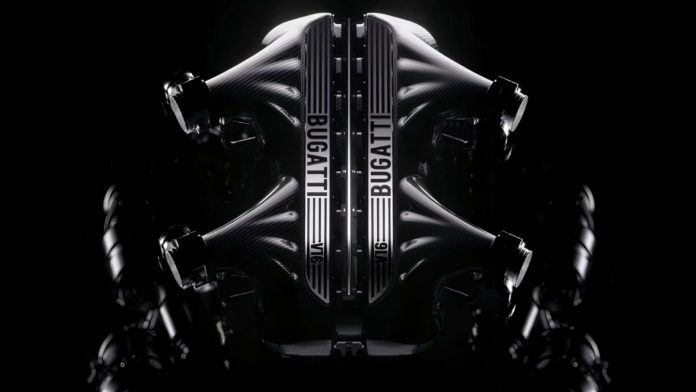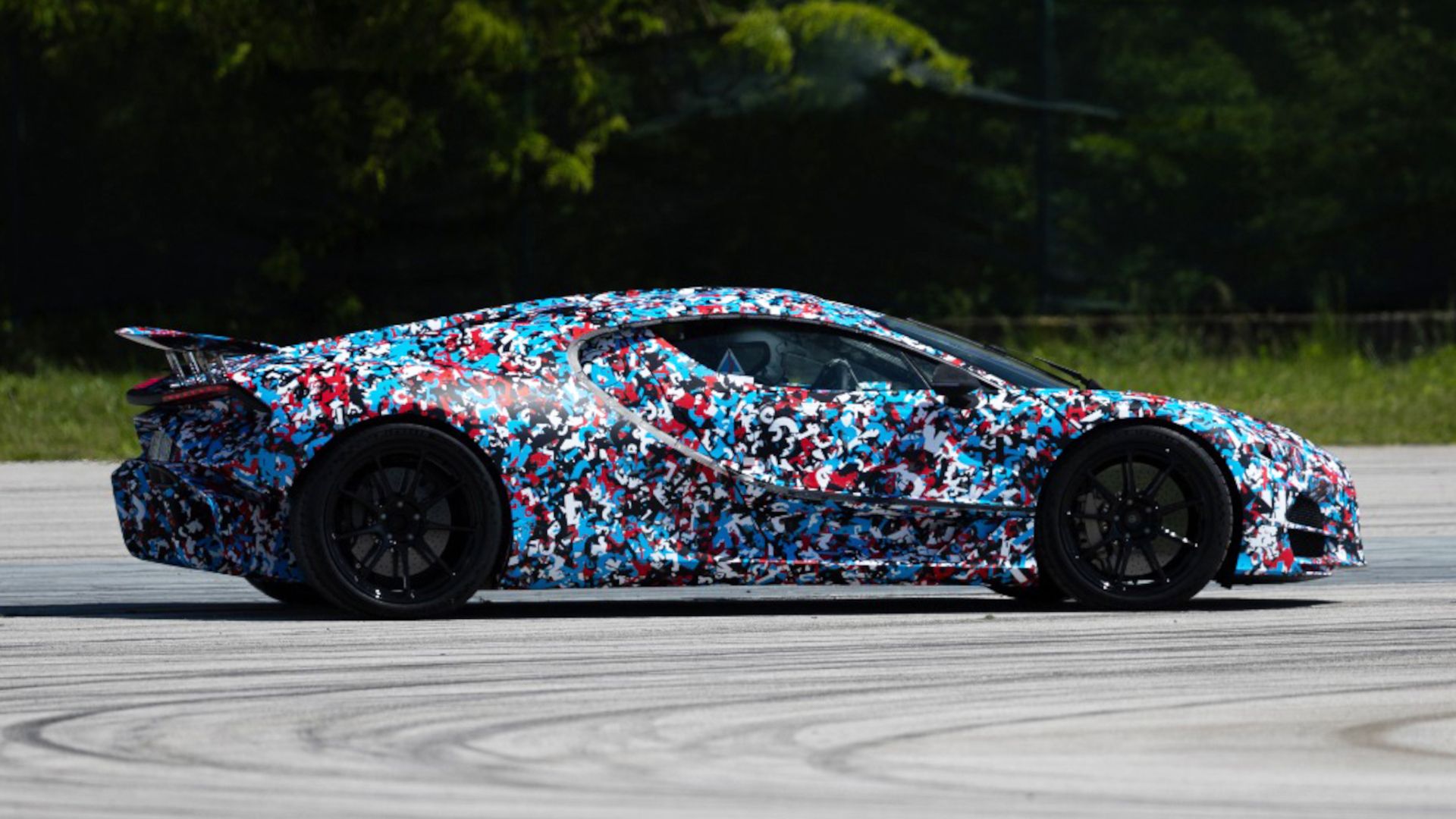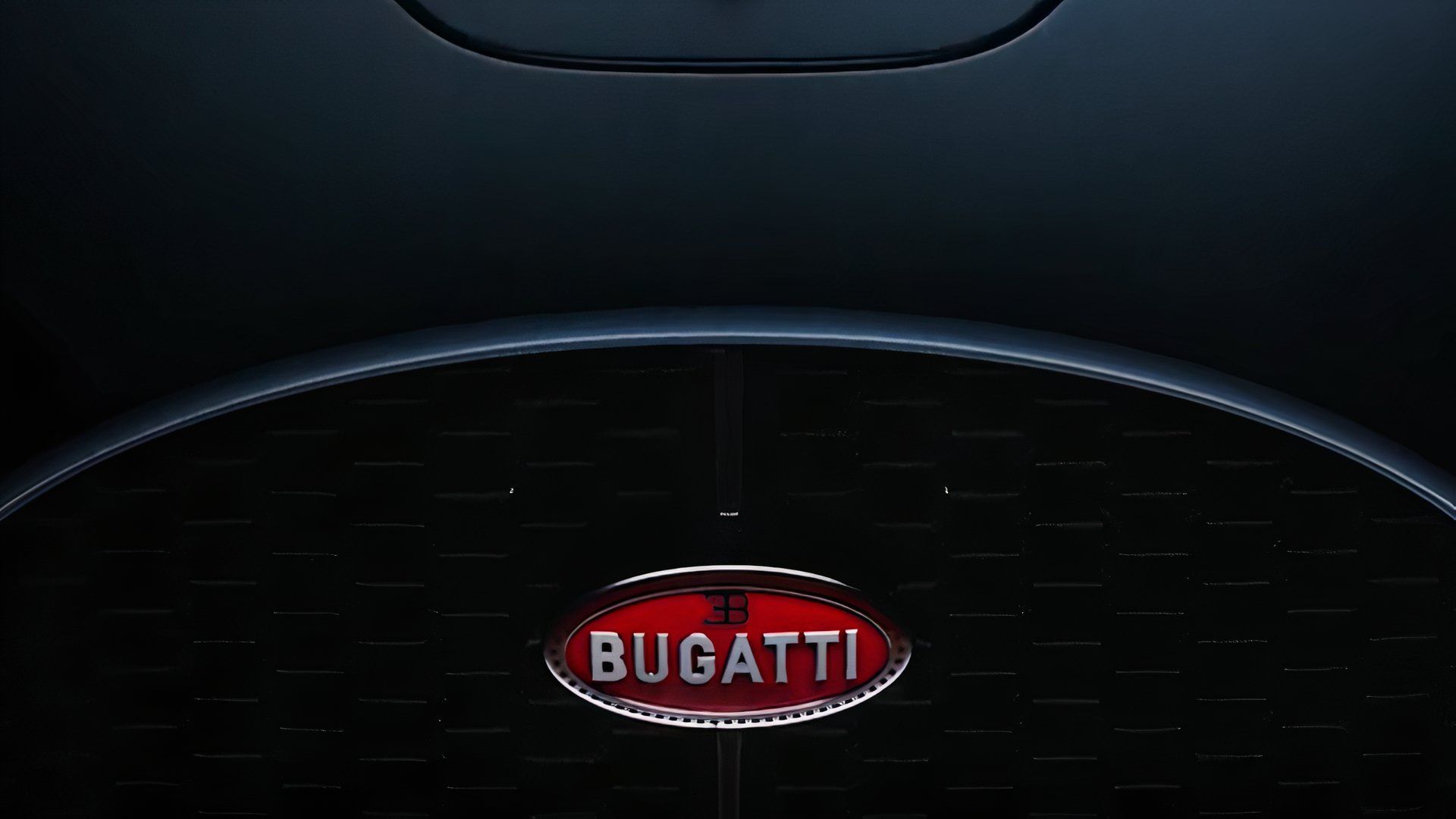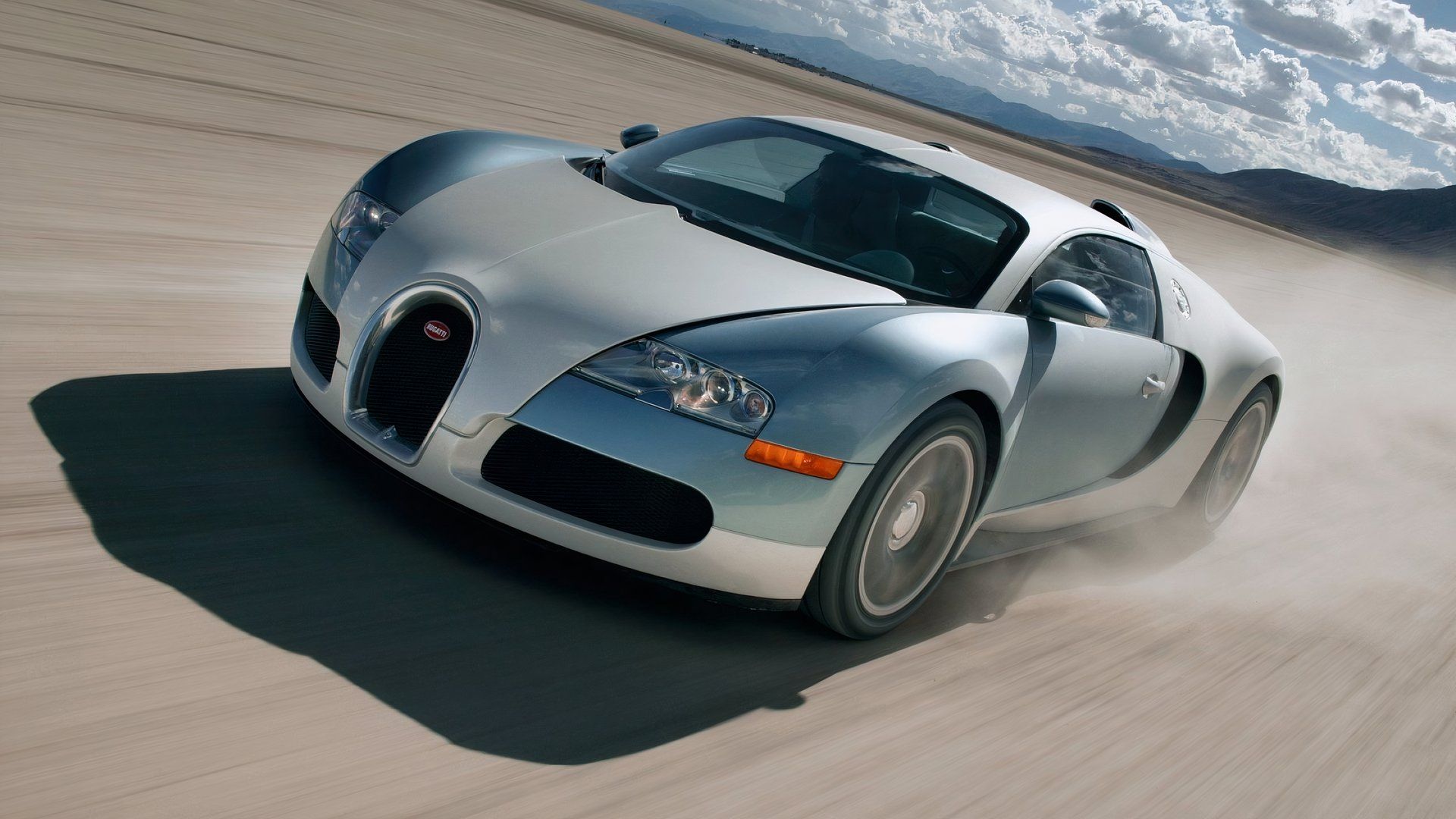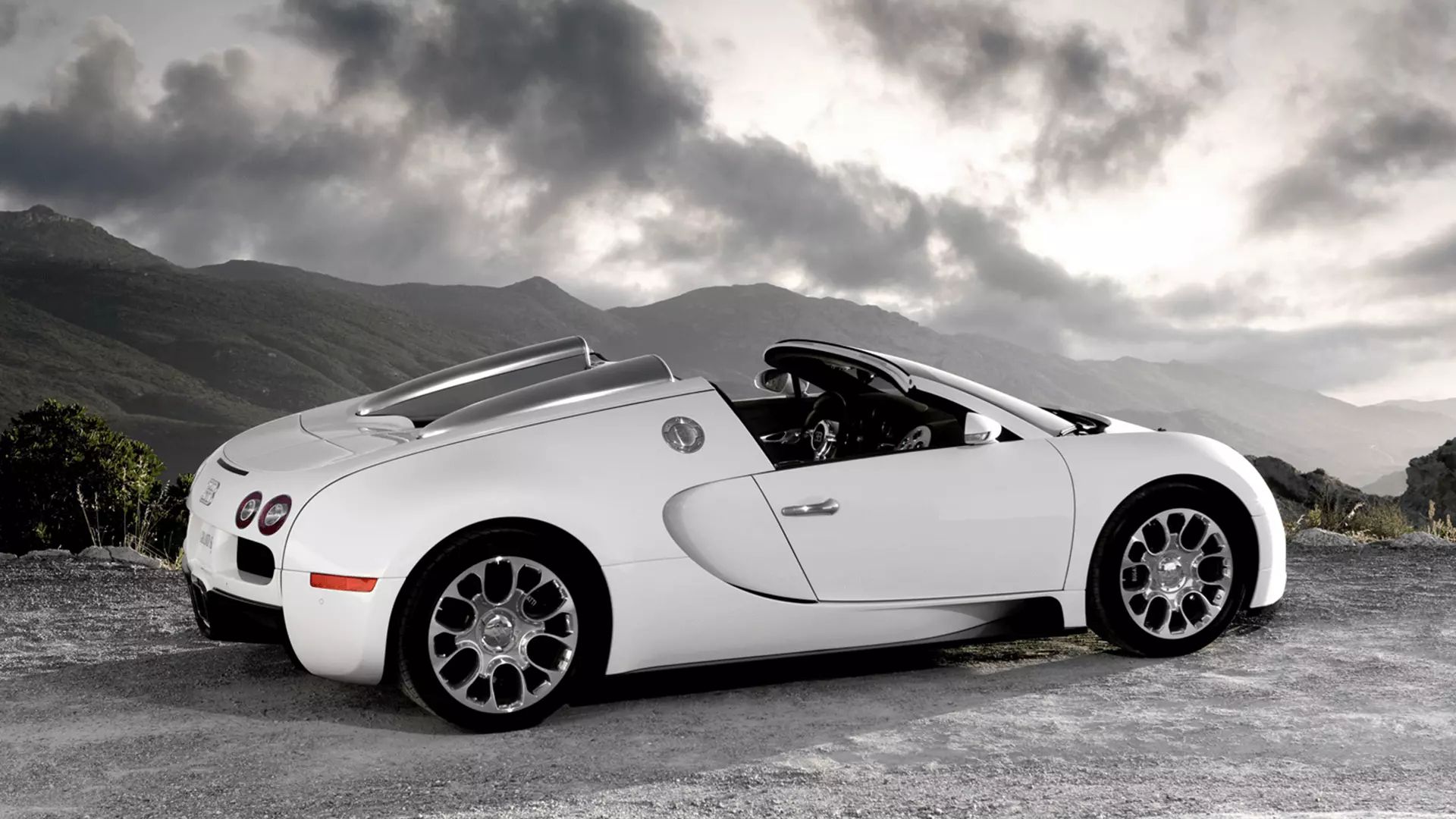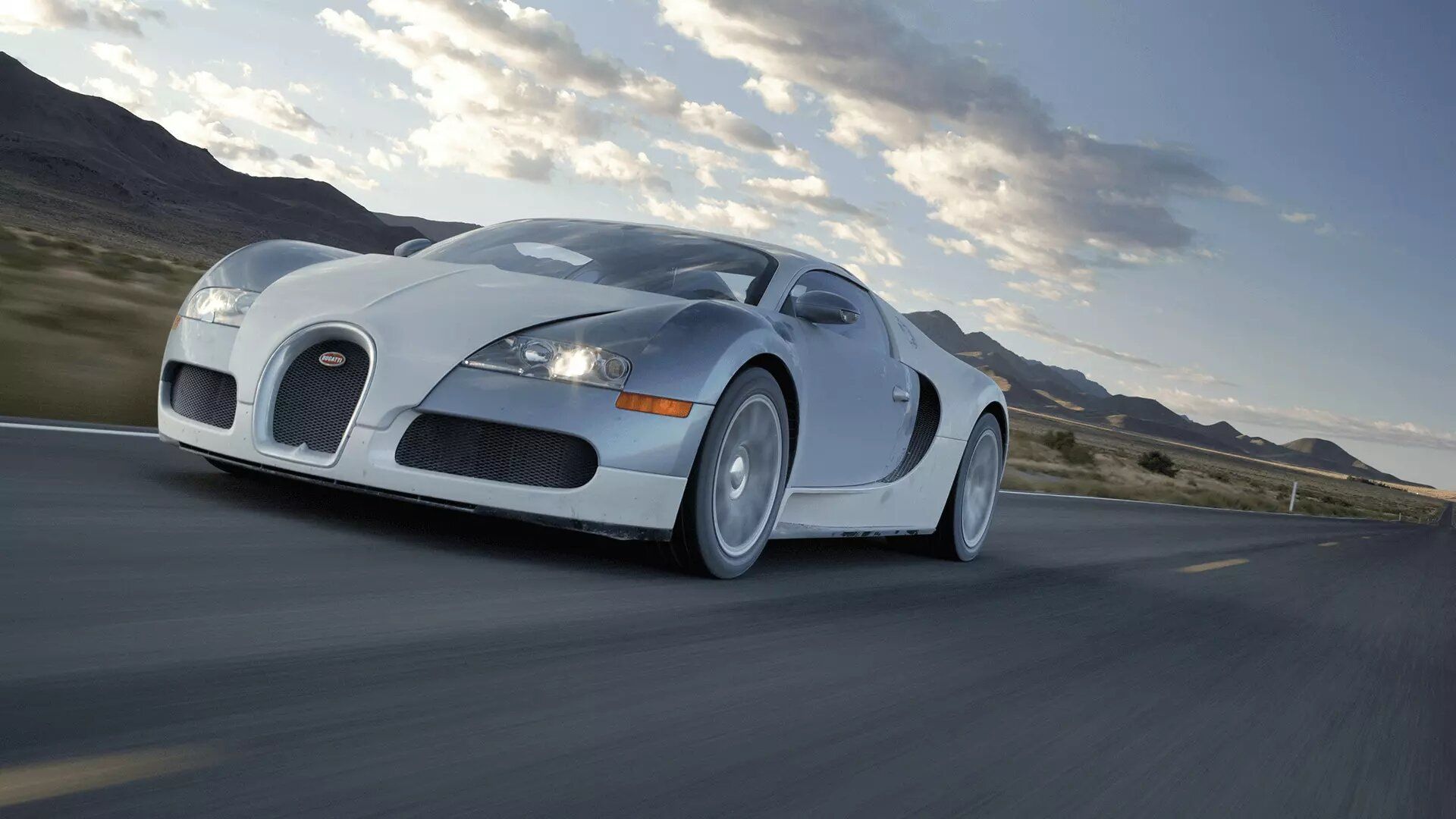With the announcement that the Bugatti Chiron is officially retiring, the automaker has confirmed a new hypercar aiming for a top speed in the area of 550 kph/342 mph, according to early photos of the speedometer. If they can pull this off, they’ll leave the Koenigsegg Jesko Absolut trailing behind by a margin of 12 mph. We’ll know more once the car makes its debut within a few short days.
Bugatti V16 Chiron Successor Getting 550 KPH Speedometer
A Bugatti gift box shared by YouTuber Marques Brownlee reveals the new Bugatti hypercar will be as intricate as a Pagani, but obviously even faster.
Of course, anyone can just slap a big number on a speedometer. Actually, achieving a top speed anywhere in the neighborhood of 342 mph is another matter entirely. If anyone can do it, Bugatti can, but this is the Mount Everest of automotive manufacturing. Bugatti has a whole series of challenges ahead of them before they actually claim the Chiron successor as the fastest production car in the world.
Power: It’s Going To Need All Of It.
The first thing you need to achieve ridiculous speeds is a ridiculous engine. Early reports on the Chiron successor point to a 1,000+ horsepower V16 with hybrid assistance, supposedly measuring forty inches in length, more than 15 inches longer than the Chiron’s W16. The Chiron cranks out around 1,500 hp, reaching a top speed of 261 mph, but it gets there with the help of four turbochargers.
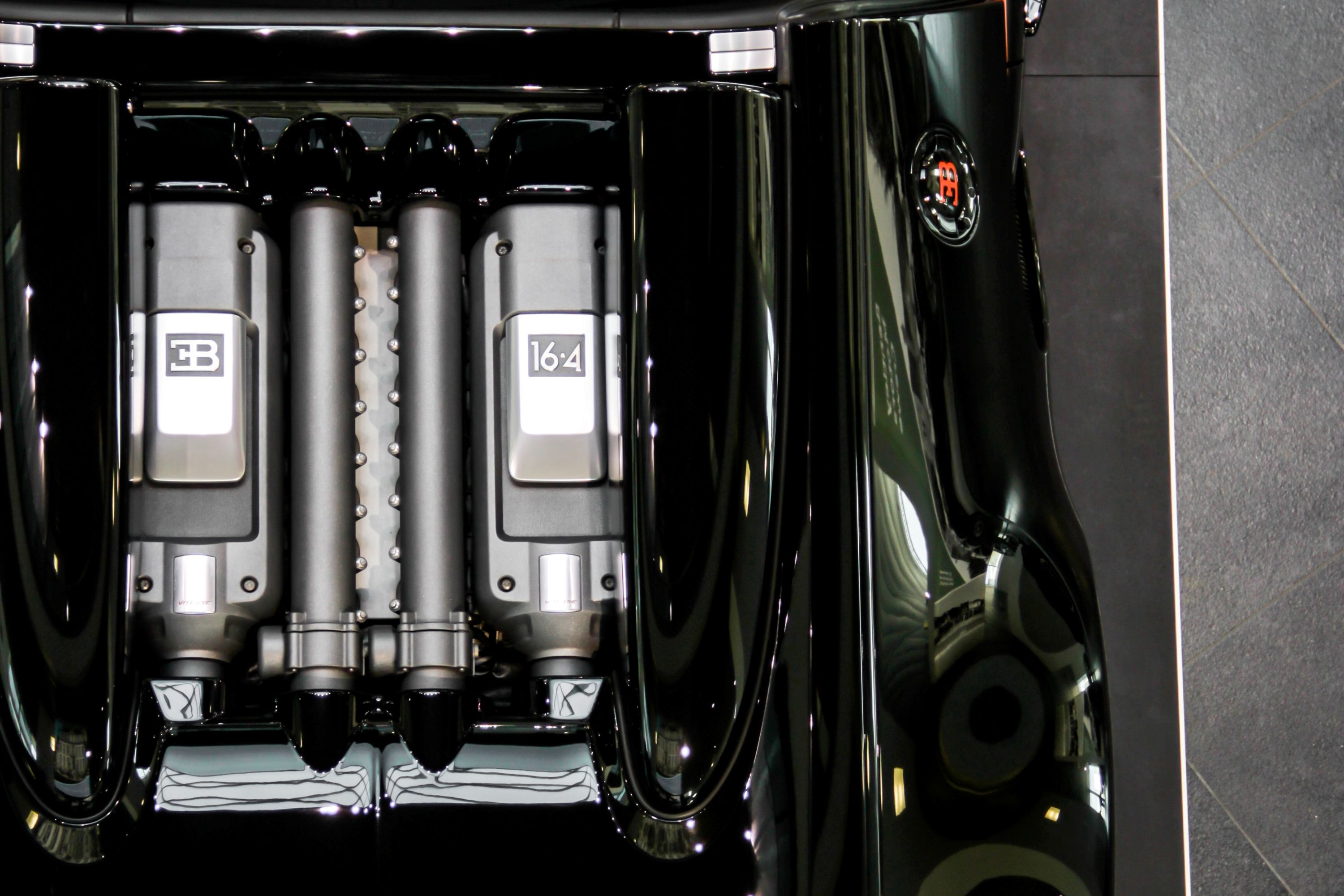
Your Complete Guide To W Engines
All you need to know about the W engine configuration
The successor aims for a naturally aspirated build, which means they’re probably expecting the electric motors to pick up the slack. The fastest hybrid in the world is currently the Koenigsegg Regera, with an electronically limited top speed of 251. A big part of Koenigsegg’s formula is the relatively lightweight battery pack, coming in at just 141 pounds. This is likely a hump that Bugatti is working on getting over, developing a hybrid system that can crank out big power without weighing the car down. Which brings us to our next point.
Weight: A Feather Compared To The Chiron
When Bugatti unveiled the Chiron Sport in 2018, it was a big deal that they managed to bring the weight down by about 40 pounds. The result was a five-second improvement on the Nardò test circuit over the base model. It’s no exaggeration to say that reducing automotive weight is just as important as raising engine specs.
Bugatti achieved a lower curb weight in the Chiron Sport with the addition of lightweight wheels, more carbon fiber, and even lightweight glass in the rear window. There’s no one magic fix to bring the weight of a car down. You can swap all the heavier metals out with feather-light alloys, you can pull the passenger seat out and scrap the stereo system. There will always be something you can reduce, redesign, or simply get rid of, in order to shave the weight down by another ounce or two, and every ounce counts.
Cooling
An engine that can do 342 mph is one thing. An engine that can do that and not explode, leaving a crater in the road, is another challenge entirely. The Bugatti W16 uses a two-cycle water-cooling system. There’s a high-temperature cycle, pushing 40 liters of water through three coolers at the front end. Then there’s a low-temperature cycle, with 15 liters dedicated to cooling the turbochargers’ heated charge air through a pair of heat exchangers. Then you’ve got oil coolers on the differential, transmission, and engine oil, and a heat exchanger for the air conditioner, so the driver doesn’t turn into the Human Torch at the quarter mile marker.
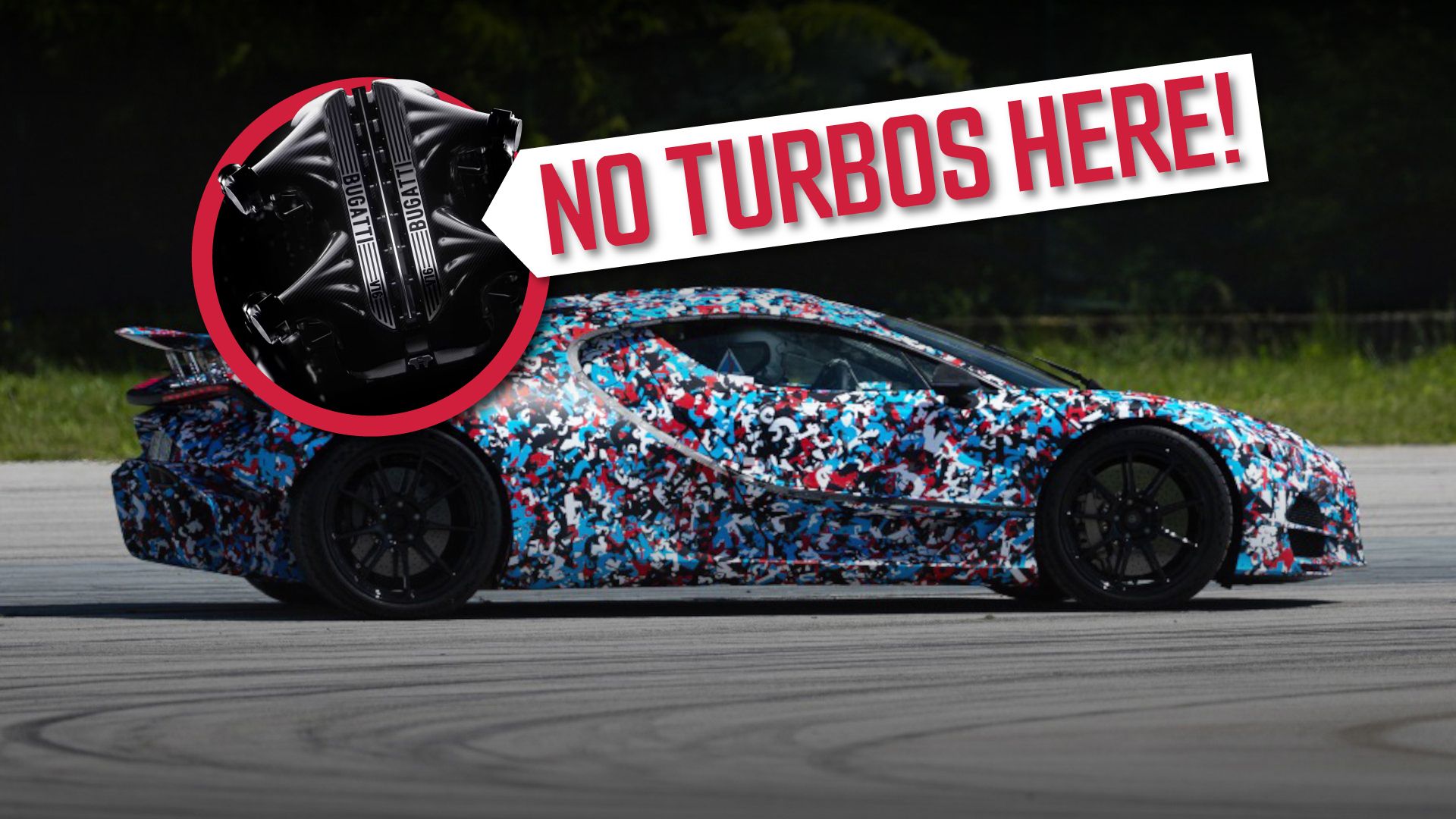
CONFIRMED: Bugatti’s New V16 Engine Will Be Naturally Aspirated
The CEO of Bugatti-Rimac has provided a few more details on the Chiron successor ahead of its reveal next month.
Cooling a turbocharged engine is a different task than cooling a naturally aspirated engine. Turbocharged engines tend to produce more engine bay heat, and you have to worry about hot spots, while naturally aspirated engines are usually tuned to run at a higher temperature in the engine block itself. On the one hand, the V16 has fewer parts that need cooling than the W16. On the other hand, the W16 didn’t get anywhere near 342 mph.
Brakes: It’s Going To Need All The Brakes
The Chiron uses a set of carbon-ceramic brake discs that can bring the car to a full stop from maximum speed in just ten seconds. These brakes are fitted with a heat shield to keep the wheels and tires from burning up in the process. The brake calipers pack a set of pistons, eight in the front and six in the back, each with a different diameter, and all made from titanium. There’s more engineering going into these brakes than there is going into most cars.
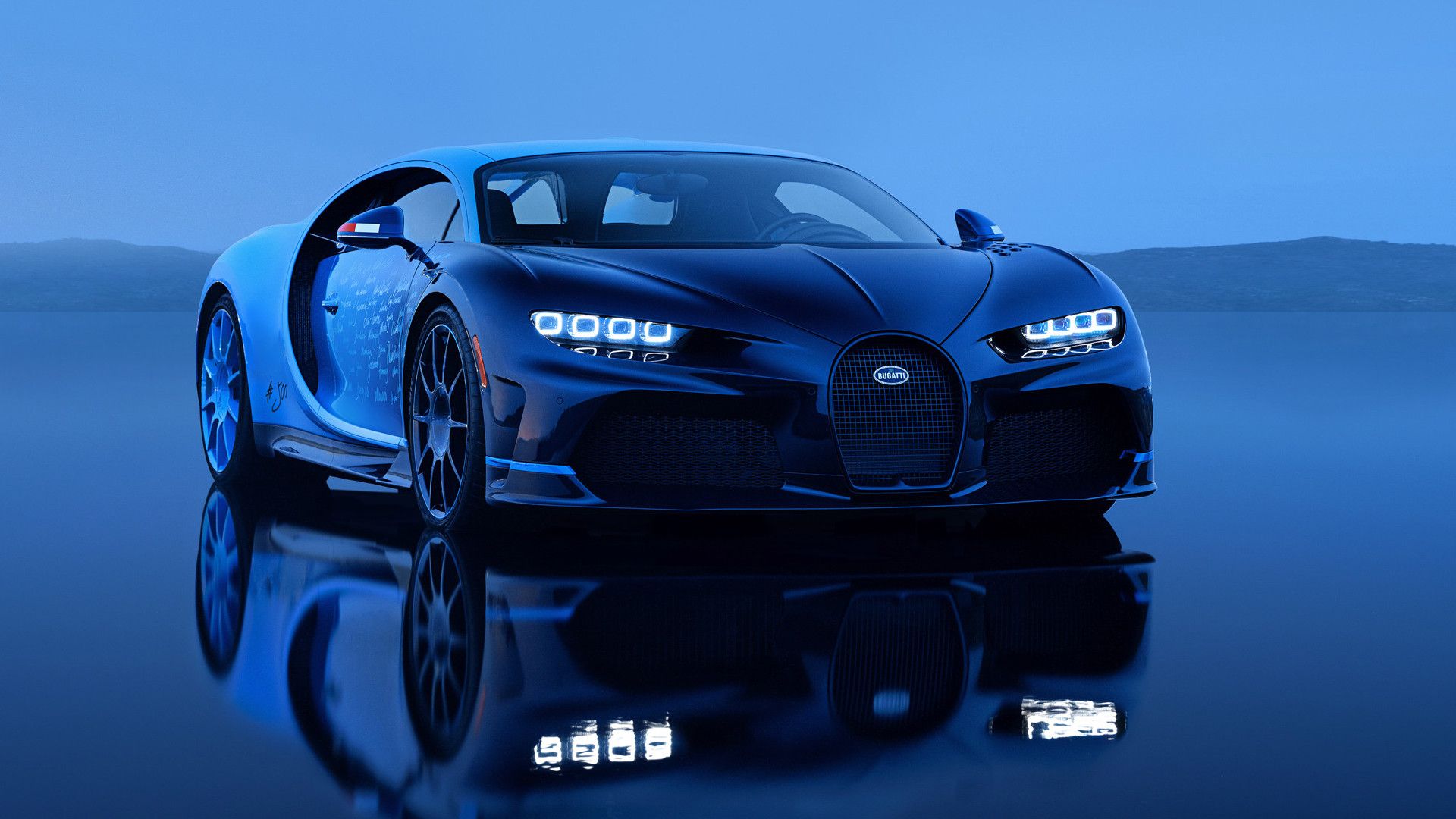
The End Of An Era Has Arrived: Meet The Last-Ever Bugatti Chiron
The dynasty of W16-powered hypercars is coming to an end soon, and this is the last Chiron to get the iconic engine. It’s been one helluva ride.
The question is whether that’s going to be enough to stop two tons of steel and carbon fiber when you add another 100 mph to the car’s top speed. We’re likely going to see all of these same elements in play, simply engineered to the next level. Carbon-ceramic discs operate very well at high temperatures, and those heat shields are a must. Our advice: more pistons and a drag parachute. While we’re on the subject of trying not to melt your tires, try not to melt your tires.
Tires: A Brand-New Tire Will Have To Be Invented
The Bugatti Veyron’s tires cost $42,000 for a set of four. And you’re supposed to get a new set every eighteen months. The Veyron’s rear tires stretch 14.4 inches across, and the set utilizes Michelin’s PAX run-flat system, which places a polyurethane/rubber insert between the wheel and the tire, allowing the tires to keep spinning after being punctured. The tires are glued directly to the wheel by a Bugatti technician to ensure a good seal.
You’ve got four rubber circles pulling a 4,044 lbs block of metal across the blacktop at around 250 mph. That you only have to replace them every year and a half is a testament to Bugatti’s engineers in and of itself. We can assume that they’re not looking to control cost on this front, and a $42,000 replacement set might look like a drop in the bucket after driving the Chiron successor for a year or two.
A Transmission That Can Handle All The Power
So you’ve got a 1,000+ hp engine that can hit 342 mph with a hybrid assist and tires that cost more than your first car. Now, how do you transfer all that power from one to the other?
The Veyron probably gives us the best hint we’re going to get. It has a Ricardo-made seven-speed dual-clutch automatic, transmitting upwards of 1,500 hp, and nearly 1,200 lb-ft of torque. The gearbox uses a sophisticated automatic hydraulic system to open and close the clutches and select gears.
Creating a transmission that can handle the output of a V16 while managing the electric motors used to achieve those ludicrous performance numbers will likely see Bugatti going back to Ricardo for another collaboration.
A Cabin That Feels Safe At Those Speeds With Low NVH Levels
A Bugatti is a luxury item at the end of the day. That means it has to actually be fun to drive. You don’t want the pilot to feel like Major Kong riding the atomic bomb at the end of Dr. Strangelove. The NVH level of a car refers to Noise, Vibration, and Harshness. You want acceleration noises below 68 decibels or so, vibration below 50 Hz, and harshness, referring to the comfort level with noise and vibration, is more subjective. An acceptable harshness level in a muscle car, for instance, might be out of the question for a luxury car.
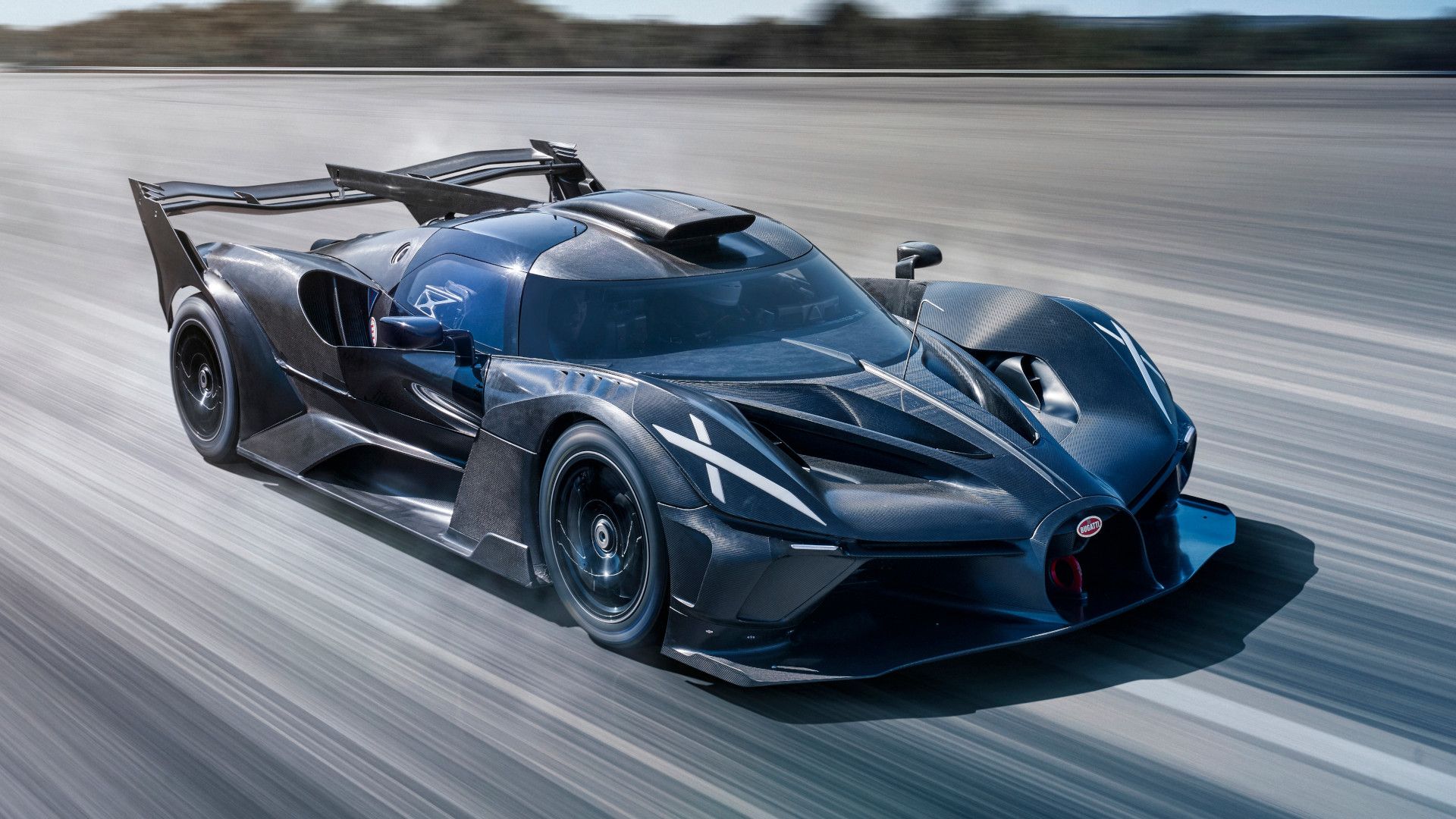
Production Bugatti Bolide Is Almost 100 MPH Slower Than The Concept
The Bolide is slower than expected, but the average person can probably drive it faster than any track-only rival.
Automakers generally use a combination of dampeners and padding to soften the NVH. Part of the Chiron’s secret formula is the use of double-glazed glass. So, driving with the windows rolled down is a very different experience than driving with the windows up. The trick is finding a balance between insulation and weight. If Bugatti aims to hit that 342 mph mark by any means necessary, we wouldn’t be surprised if the Chiron’s successor is a little louder than its predecessor.
Aerodynamics: Keep It From Taking Off
Lift, weight, thrust, and drag. If these four elements of aerodynamics aren’t just right, you’ve got a car that may take off like a rocket. It could even wind up airborne without enough downforce. Theoretically, a Bugatti Veyron is so aerodynamically well-designed that it could drive upside down in a tunnel, and every inch of the Chiron is designed for optimal airflow, from the drag-reducing air curtains up front to the wing mirrors, directing airflow to the intercoolers.
2:08
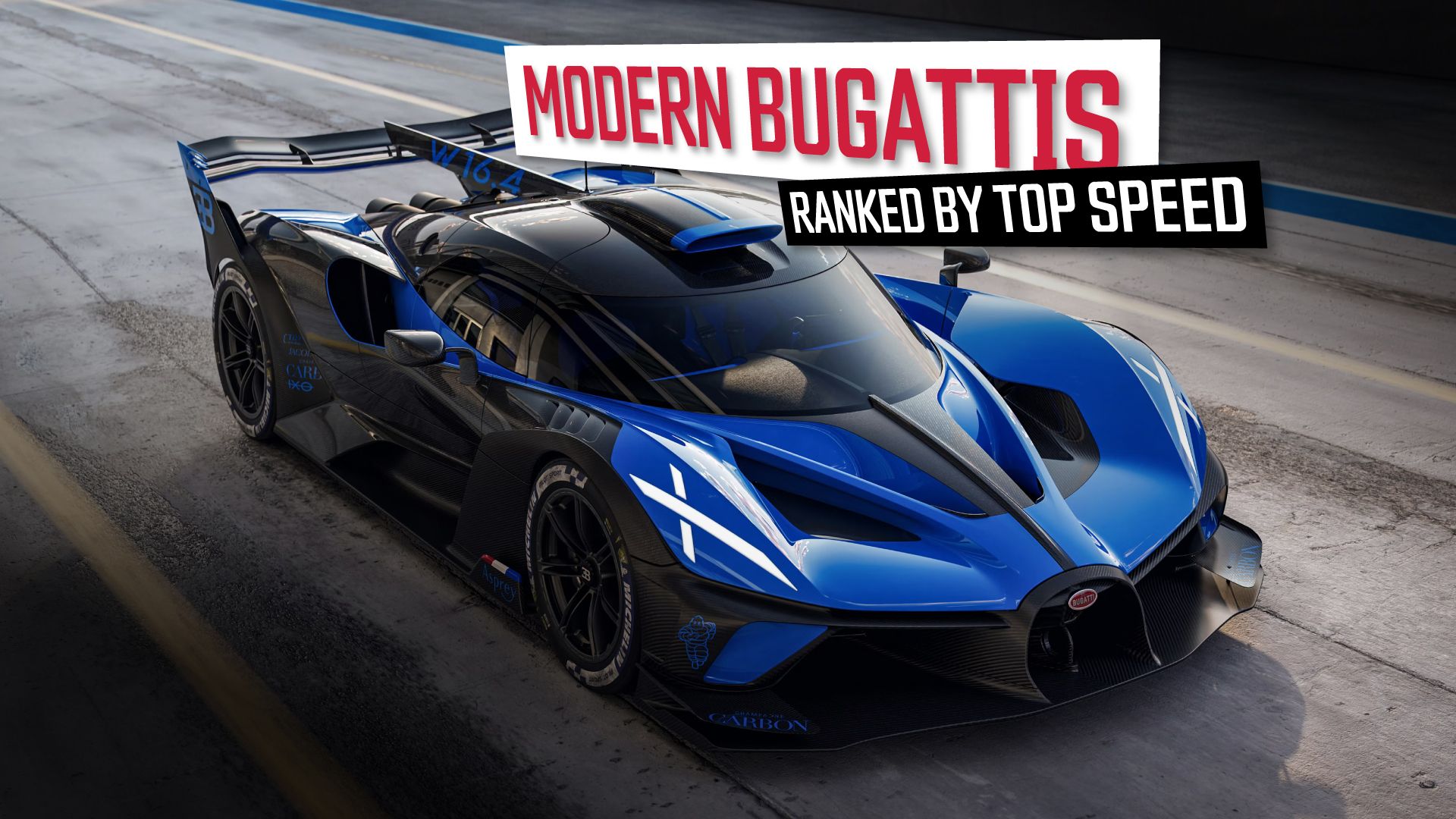
All Of Bugatti’s Modern Creations Ranked By Top Speed
Every Bugatti made since the brand’s revival, from the slowest to the fastest.
When an automaker wants to hit a higher top speed, you tend to see sleeker lines and longer body designs. Most high-end performance cars are designed in such a way as to achieve excellent airflow without compromising the signature design touches that make, say, a Bugatti and a Lamborghini easy to tell apart at a glance. Our best guess: expect the Chiron’s successor to look a bit like a stretched out Veyron or Chiron Super-Sport.

